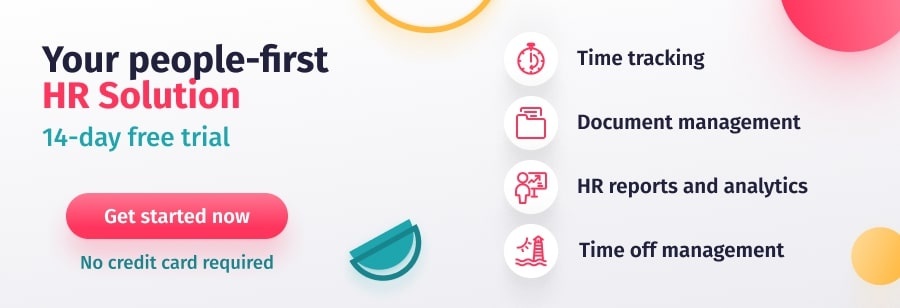Diversity is the norm of our world, but equal opportunity has to be emphasized time and again and unfortunately it is not self-evident today. Discrimination continues, inter alia, due to gender, origin and / or religion. Even if in addition to the Basic Law, the General Equal Treatment Act (AGG) enshrined in labor law. Diversity management is a strategy increasingly being implemented in companies to promote diversity and equality. What exactly this is and what steps should be taken to implement successful diversity management is explained below.
What's Needed for Diversity in the Workplace?
What Exactly is Diversity Management?
Diversity Management can be defined as the multitude of management aspects and measures that relate to the recognition and benefits of diversity in companies. In doing so, both social, economic and political factors (the employee) are taken into account. These can be divided into two large groups:
Internal Factors
- Gender, age, ethnic origin, education, religion, beliefs, sexual orientation, disability…
External Factors
- Income, marital status, geographical location, parenting, education, work experience, habits, leisure behavior…
Acceptance and mutual respect and ultimately the promotion of equal opportunities are always in the foreground. Diversity Management is a Subarea of HR management with the goal of identifying success-relevant aspects of diversity in companies and exploiting the benefits of different competencies, characteristics, attitudes and cultural backgrounds. Finally, awareness should be created that diversity is a critical success factor of any business. At the same time it reflects the moral-ethical responsibility of the organization.
Opportunities and Risks in Diversity Management
The key to success is diversity – Through the interplay of different ideas, perceptions, experiences and attitudes, companies become more innovative and improve their problem-solving skills. Talents in different phases of life and with different biographies can give the company a head start of knowledge and experience, which has a positive effect on competitiveness. In addition, challenges such as demographic change and skills shortages can be overcome.
Another great advantage is that it opens up the opportunity for companies to open up new sub-markets and new customer groups if the company employs people from those countries who know the language and culture of the countries. In addition, Diversity Management promotes the openness and learning ability of the organization and thus the sustainability. The intercultural understanding and the intercultural skills of the employees are also being expanded. Finally, it should be taken into account that companies that implement successful diversity management can be perceived as an attractive employer and can thus attract and retain talent.
Despite all these benefits, according to a study by the Diversity Charter, 2/3 of the companies have not yet implemented any diversity management measures, and only 19% of companies are planning concrete measures for the future. This could be because many companies simply do not consider diversity management as necessary or fear a backlash effect. The latter can be clearly explained by means of an example: Assume that the manager position of a company is to be filled, due to a certain quota, e.g. Women’s quota, the position is occupied female. The selected person is then often labeled as “quota woman”. Skilled workers who are convinced of their skills and achievements avoid such stigmatization or categorization. As a result, they deliberately avoid the diversity-based selection process, which can negatively impact the company’s recruitment process.
However, it is a fact that a company can benefit greatly if it chooses a more diverse workforce. It is to be hoped that in the long term, diversity becomes a matter of course and there is absolute equality of opportunity.

What Does Successful Diversity Management Look Like?
The majority of companies consider the success that diversity management entails to be measurable. They mainly do this with the help of personal interviews. But what makes successful diversity management? Many companies do not know how and where to start first. In the following we show you which steps you should follow to ensure successful diversity management.
-
- Defining goals: First, the company should think about what a diverse corporate culture might look like in their organization and how to simultaneously support the achievement of business goals.
- Determine the actual state: Basic conditions and prerequisites should be analyzed here. The Diversity Charter suggests that a company should first answer the following questions.
- Who is employed in the company and which qualifications are still missing in order to achieve the company’s goals?
- What conditions must be met so that the workforce can and wants to develop its potential optimally?
- How well are the basic conditions fulfilled?
- What needs to change in the company so that the missing prerequisites can be met?
- Establish actions: The next step should be to identify actions that each individual employee can use to achieve the set diversity goals. At the same time, a time frame and available human and financial resources should be defined. These measures would be conceivable, for example: intercultural workshops; Employees tandems; a corporate calendar that records the holidays of all represented cultures / religions; Etc.
- Implement measures: Before the practical implementation, all team members should be aware of the measures, so that as many of the participants as possible can be involved in the process. In addition, uncertainties, misunderstandings, and resistance can be detected and eliminated at an early stage.
- Measuring success: Whether diversity management is successful can be measured by various key figures: i.a. on staff turnover, turnover, market share or sick leave of employees. In addition, employee surveys and discussion questions can be used to determine whether there is an awareness of diversity in the company.
